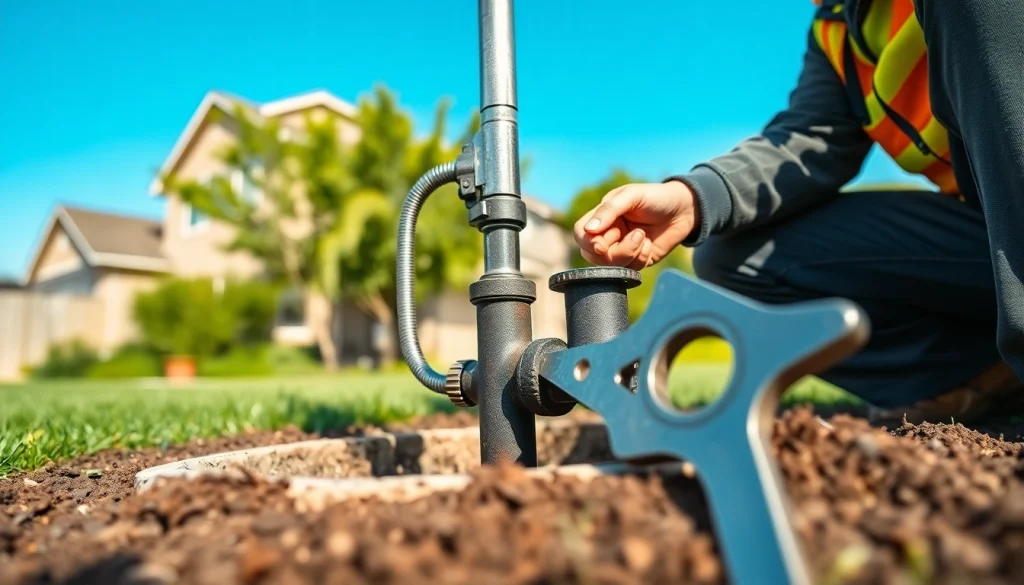Essential Guide to Well Pump Replacement: Key Steps and Costs

When it comes to maintaining a water supply at your home or business, understanding well pump replacement is crucial. Well pumps are essential devices that draw water from underground aquifers, ensuring that your household has continuous access to fresh water. Over time, these pumps may require replacement due to wear and tear, changes in performance, or even total failure. This guide provides an in-depth look at all aspects of well pump replacement to equip you with the necessary knowledge to make informed decisions.
Understanding Well Pump Replacement
What is a Well Pump and Its Functions?
A well pump is a mechanical device designed to lift water from a well into a storage tank or directly into a plumbing system. The two primary types of well pumps are submersible pumps and jet pumps. Submersible pumps sit underwater in the well, whereas jet pumps are typically mounted above ground. Both types function by creating a vacuum that draws water up through pipes.
Well pumps serve several purposes:
- Delivering fresh water for household consumption and use.
- Facilitating irrigation for agricultural needs.
- Supplying water for livestock and other farm operations.
Signs You Need a Well Pump Replacement
Recognizing when it’s time to replace your well pump can prevent costly repairs and water supply issues. Here are some signs to look for:
- Insufficient Water Pressure: If you notice a drop in water pressure or weak water flow from faucets and showers, this may indicate pump failure.
- Strange Noises: Unusual sounds coming from the pump can be a sign of internal problems.
- Frequent Cycling: If the pump continuously turns on and off, it may be struggling to meet demand and might need replacing.
- Electrical Issues: If the pump is tripping breakers or blowing fuses, it could signal electrical problems that necessitate replacement.
Types of Well Pumps: An Overview
Understanding the types of well pumps is essential when considering replacement options. The two main types include:
- Submersible Pumps: These pumps are designed to operate underwater, making them highly efficient for deep well applications.
- Jet Pumps: Typically used for shallower wells, jet pumps operate above ground and draw water up using suction.
When selecting a pump for replacement, factors such as the depth of your well, groundwater levels, and your household’s water demand should be considered.
Evaluating Replacement Costs for Well Pump Replacement
Typical Expenses Involved
The costs of well pump replacement can vary significantly based on several factors including pump type and professional service fees. Here’s a breakdown of potential costs:
- Pump Cost: The price of a well pump itself can range from a few hundred to several thousand dollars depending on its type and capacity.
- Installation Fees: Professional installation can add anywhere from $500 to over $2,000 to your total expense based on the complexity of the job and physical location.
- Additional Materials: You may also incur costs for electrical wiring, plumbing, and other materials needed for the installation.
Factors Affecting Well Pump Replacement Costs
Several factors can influence the total costs of well pump replacement:
- Depth of the Well: Deeper wells typically require more powerful and often more expensive pumps.
- Type of Pump: Submersible pumps tend to be pricier compared to jet pumps, particularly for high-capacity models.
- Local Labor Rates: Labor costs can vary greatly depending on geographic location and market demand.
- Permits and Inspections: Local regulations can require permits or inspections, adding to total costs.
DIY vs Professional Installation: Cost Analysis
One of the significant decisions in the replacement process is whether to opt for a DIY installation or hire professionals:
- DIY Installation: If you have the skills and tools, replacing a well pump yourself can save on labor costs. However, this option carries the risk of errors that could lead to further expenses and complications.
- Professional Installation: Hiring a licensed plumber ensures a job well done. The combination of skills, tools, and experience can help avoid costly mistakes and guarantees compliance with local regulations.
Steps for Successful Well Pump Replacement
Preparing for Replacement: Tools and Safety
Safety is paramount when performing any mechanical work. Here are recommended tools you may need for a successful well pump replacement:
- Wrenches and pliers
- Pipe cutters
- Safety goggles and gloves
- A sturdy ladder, if necessary
- Gasket sealant and plumber’s tape
Before starting on the replacement, ensure the power supply to the pump is turned off to prevent accidents.
Step-by-Step Guide to Well Pump Replacement
Replacing a well pump may seem daunting, but breaking it down into steps can help simplify the process:
- Turn Off the Power: Always start by disconnecting power to the well pump.
- Remove the Existing Pump: Disconnect pipes and wiring, carefully pulling the old pump from the well. Take note of how everything is connected for your new installation.
- Install the New Pump: Reverse the removal process. Secure the new pump, reconnect the pipes, and ensure all fittings are tight.
- Restore Power and Test: Once everything is connected, restore power to the pump. Check for leaks and test the water flow.
Post-Replacement Maintenance Tips
After replacing your well pump, it’s vital to take care of the equipment to ensure longevity:
- Regularly check your water quality and pressure.
- Inspect electrical connections and wiring for signs of wear or damage.
- Maintain an appropriate schedule for regular pump inspections to catch any issues early on.
Choosing the Right Well Pump for Your Needs
Understanding Pump Specifications
When selecting a well pump replacement, understanding specific terms and ratings is crucial:
- Horsepower (HP): This determines the power needed to lift water from the well; higher HP is necessary for deeper wells.
- Flow Rate: Measured in gallons per minute (GPM), this indicates how much water can be delivered at one time.
- Efficiency Ratings: Look for energy-efficient models that can save you money on power bills over time.
Matching Pump Size to Your Well
Ensure the pump you choose is compatible with the depth and diameter of your well. An incorrect size can lead to inefficiency, increased wear, and potential failure. It’s essential to consider the following:
- The depth of the water table.
- The well’s diameter.
- Your household’s water consumption needs.
Brand Comparisons for Well Pumps
While various brands offer different features, always seek reliability and warranty protection. Compare specifications, customer reviews, and costs. A well-informed decision can lead you to a pump that will perform efficiently for years to come.
Common Challenges in Well Pump Replacement
Identifying and Troubleshooting Issues
Even with a thorough installation, problems can arise. Here’s how to identify and resolve common issues:
- Low Water Pressure: This could be due to clogging in pipes or an incorrectly sized pump.
- No Water Supply: Verify that the pump is functioning properly and there are no power issues.
- Frequent Cycling: If the pump turns on and off excessively, it may be due to a faulty pressure switch or leak in the system.
How to Ensure Long-lasting Performance
Incorporating regular maintenance can significantly extend the life of your well pump. Follow these tips:
- Monitor pressure and flow regularly.
- Schedule professional inspections consistently.
- Address any unusual noises or performance drops immediately.
Resources for Additional Help
If you find yourself needing assistance during or after your well pump replacement journey, numerous resources are available:
- Educational online platforms featuring video tutorials.
- Consultation services from experienced plumbers and water well drillers.
- Local plumbing supply stores offering guidance and support.
With the knowledge gained from this comprehensive guide, you can confidently tackle the challenges of well pump replacement. By being proactive and informed, you’ll ensure a steady, reliable water supply for your home or business.







